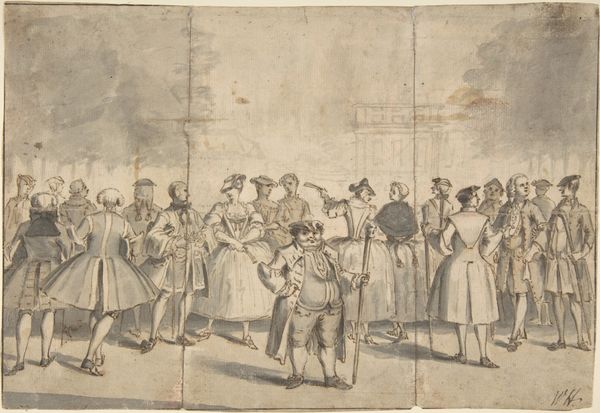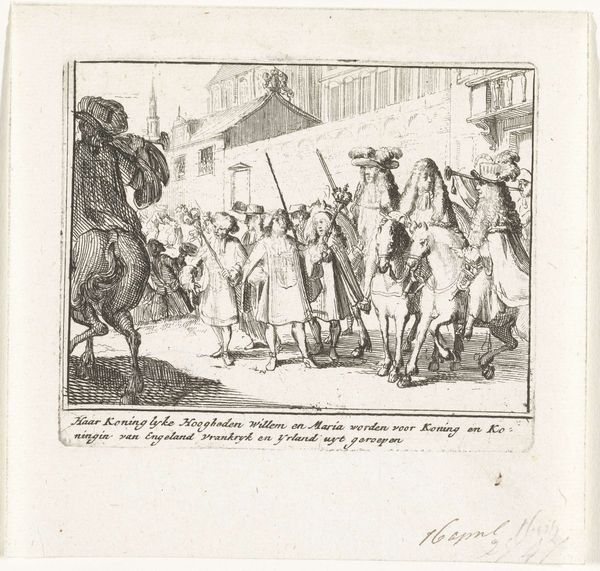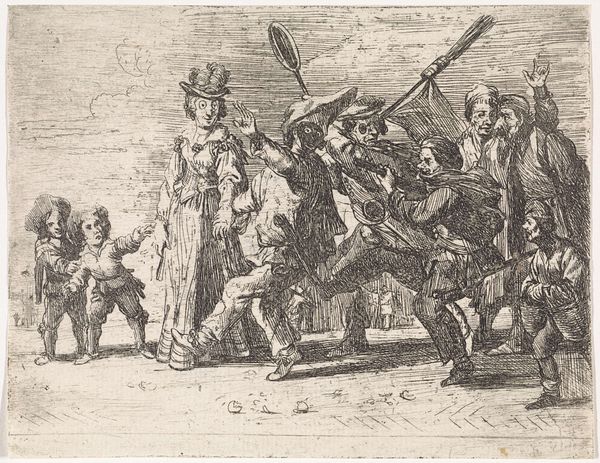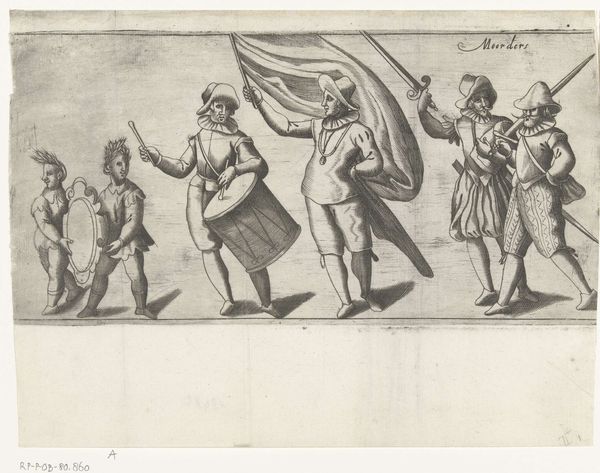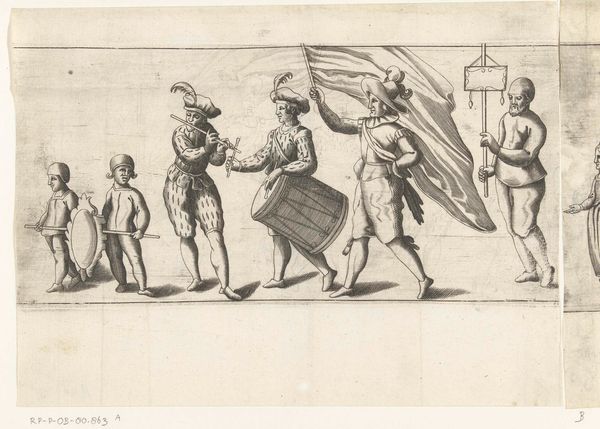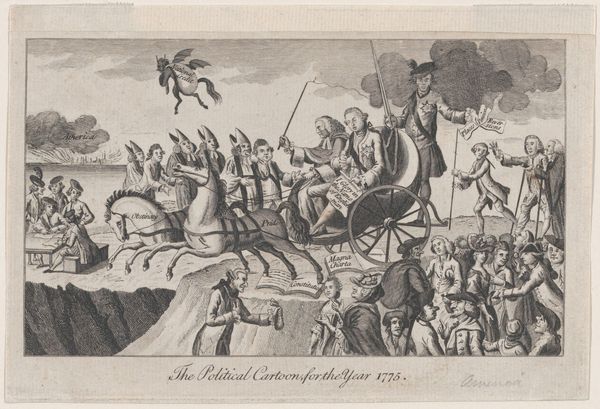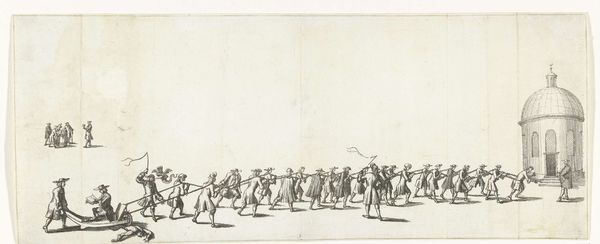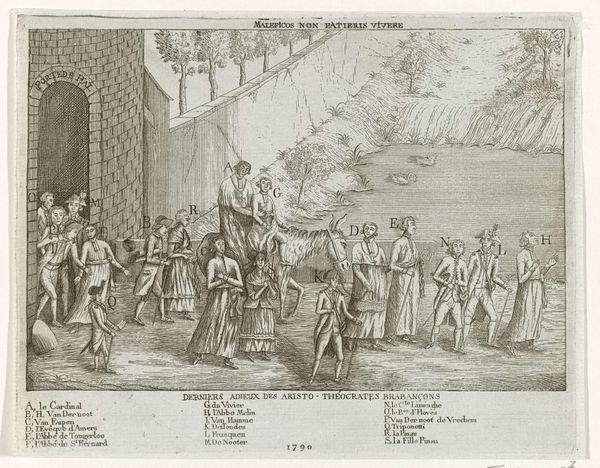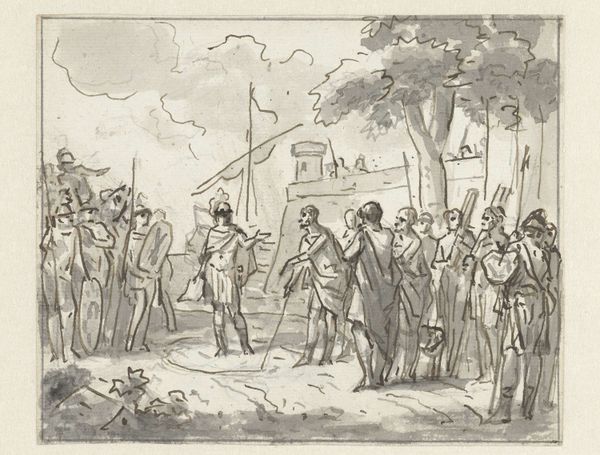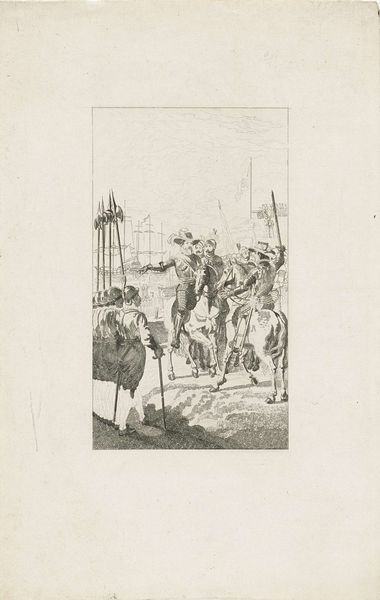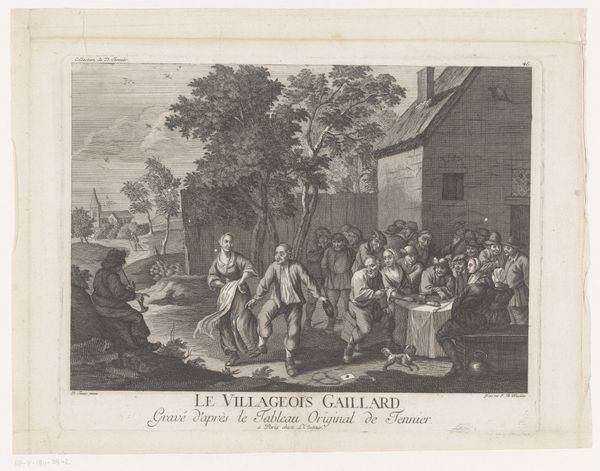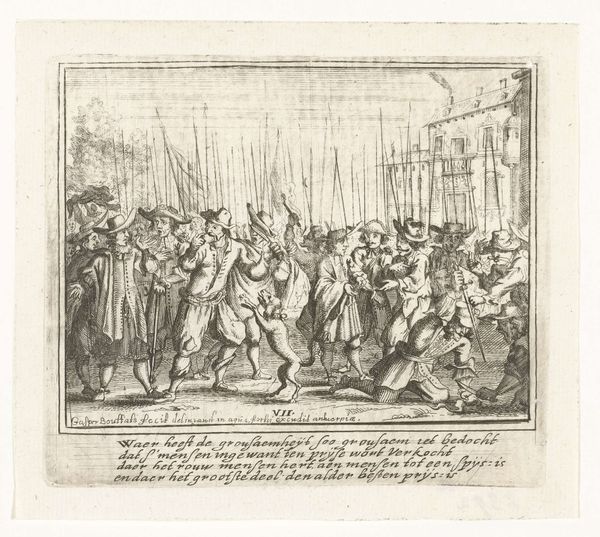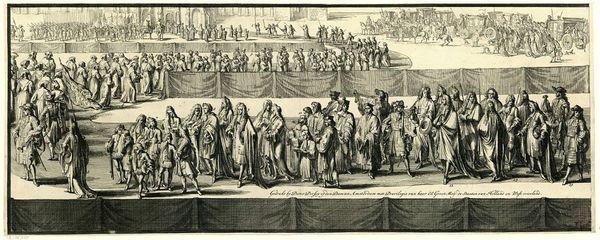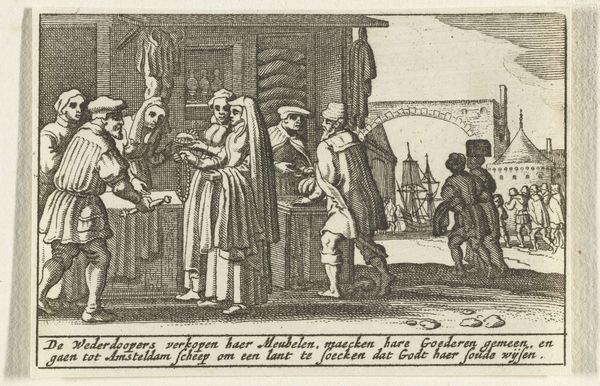
drawing, ink, pen
#
drawing
#
baroque
#
pen illustration
#
ink
#
pen-ink sketch
#
pen
#
genre-painting
#
history-painting
Dimensions: height 130 mm, width 240 mm
Copyright: Rijks Museum: Open Domain
Curator: This drawing, created with pen and ink in 1706 by Friedrich Ebisch, is titled "Zinnebeeld op de vredesonderhandelingen in 1706 (?)", or "Allegory on the peace negotiations in 1706 (?)." Editor: My goodness, it's busy, isn’t it? A stage full of characters and a palpable sense of… well, controlled chaos, if that makes sense. The lines are so delicate, but the scene itself feels rather grand, doesn't it? Like a moment plucked straight from a history play, all feathered hats and gesturing. Curator: Indeed. This work provides insight into the baroque era’s visual language around peace and diplomacy. The figures gathered suggest representatives engaging in dialogue, possibly against the backdrop of naval ships, representing the powers involved. The presence of a scribe—an angel? writing down terms could symbolize the formalization of agreements, although the peace achieved here would have favored some groups while suppressing others. Editor: Oh, absolutely! It screams "negotiation," doesn't it? That figure with the quill and ink, furiously scribbling away like his life depends on it… and the hats, they're flying every which way. It reminds me of trying to herd cats, you know? Except the cats are empires and the litterbox is, like, global dominance. What is the social dimension, the race or gender play? Curator: It's definitely about the representation of power. There is the suggestion of negotiation and brokering, and there's a very hierarchical feel within it. In terms of race, of course, this being Europe in 1706, colonial implications are inevitably woven into the fabric, though not visually explicit. The scene also largely sidelines any visible female presence, which points to whose voices and hands shaped peace treaties during the baroque era, which again speaks volumes about the construction and distribution of historical authority. Editor: Right, you’re bringing that up! The absence speaks volumes, doesn't it? The power is concentrated in that masculine energy. It's a scene filled with such swagger and such precise pen strokes. To be fair though it could be about people and even the artist capturing and recreating a really decisive historical event in his own visual and expressive language. Who knows? Maybe it felt quite fresh at the time! Curator: Exactly. We interpret this tableau not simply as a record but as a narrative charged with power dynamics, colonial undertones, and the politics of representation inherent in the baroque period, with clear patriarchal roots. Editor: Ah, so, we’re sort of unearthing the layers, right? Beyond the powdered wigs and waving arms, there's this current of dominance humming underneath. And with all those ships way in the back there too as the stage and the playfield all together at the same time. Curator: Precisely. Thinking critically about it gives us pause to then look closely into what remains out of frame or perhaps outside the historical account too. Editor: Makes one ponder! Okay I'll have another long look at the men on boats right now!
Comments
No comments
Be the first to comment and join the conversation on the ultimate creative platform.
